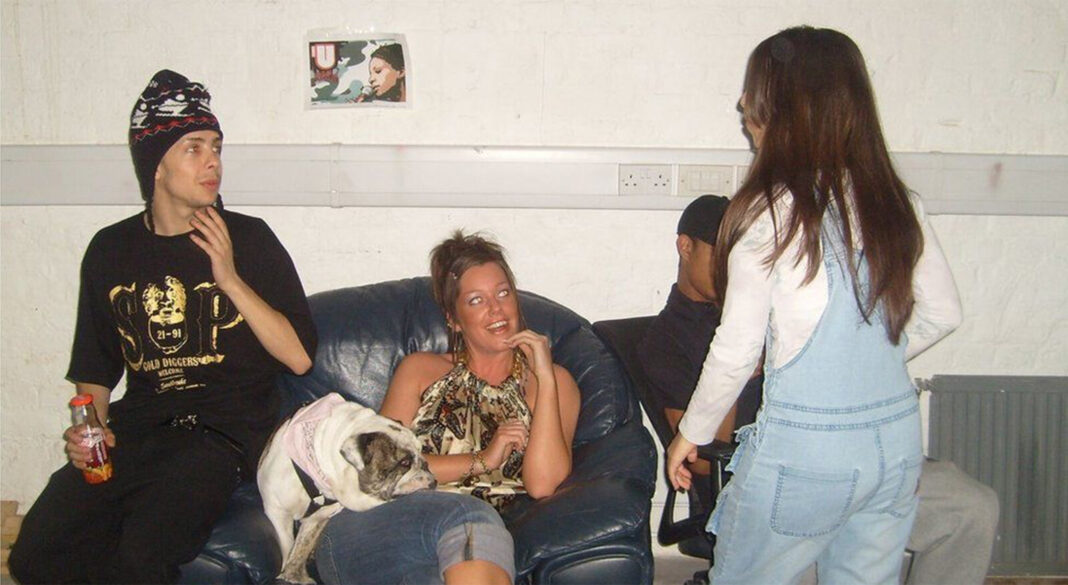Picture the scene: it’s 2005, secondary school has just let out, and I’m ensconced on my mate Georgie’s sofa, off-brand cheese string in one hand and the Sky remote in another. Still several years away from a decent enough internet connection for YouTube, our musical discovery revolved around television, cycling between The Box and Kiss TV in search of something that felt fresh and exciting. The day we decided to scroll that little bit further — to Channel 385 — we got our answer; kids who looked like us and our schoolmates, music that felt scrappy and accessible and energetic. This was Channel U; our window into inner-city Black-British music.
For working-class teenagers across the country, it’s no understatement to say that Channel U was something of a revelation. Founded in 2003 by Darren Platt, it began as a business experiment, but quickly grew into a true cultural celebration, a way for young artists to be heard and taken seriously. As my mate Georgie put it, “it gave artists a chance who otherwise wouldn’t be looked at twice by other music channels.” By being open to music video submissions of all levels of raw quality, the team at Channel U made it possible for the likes of Ghetts, Tinchy Stryder, Tinie Tempah, Chipmunk, Big Narstie and even Ed Sheeran to be beamed into homes for the very first time, sparking a whole new wave of reverence for ‘urban’ culture. It’s a genre label that the music industry has since moved away from (and for good reason), but at that time, there was no better way to put it; these were stories from the streets, told by the people who truly lived and breathed that culture.
20 years on from its origin, the success and legacy of Channel U is the subject of a new documentary from Link UP TV: Home Invasion: The Story Of Channel U. Across two hours, we meet many of the artists who were involved in the scene at that time, but also the people behind the scenes who made it happen. One such woman is Cat Park, a go-getting teenager whose life changed upon a chance meeting with Platt in 2005.
“I was already a big Hip-Hop and Garage fan but when I started at Channel U, I fell in love with the UK scene and completely immersed myself in it.” she says. “Being there was more than a job; there was always something happening, someone coming in to drop a video off or filming going on downstairs. The excitement would be crazy when one of the bigger artists came in with a new video that you knew the viewers would love. If something was good, we’d usually get it viewed, approved and on the channel within hours of it coming in”.
As Channel Manager, Cat played a huge part in the trajectories of many artists; some who went on to the mainstream, but also those who simply meant a lot to their local community, capturing a moment in time; Nathan, Mr Wong, Ice Kid, SBD. At a time when major labels tied artists into deals that might not promote a single for several weeks (if not months), Channel U had an instantaneousness to it that felt democratic and fresh. Whether you were from Manchester or Cardiff, London or Liverpool, the beauty of Channel U was that it wasn’t filtered through the gaze of trend-chasing bigwigs; whether it was shot in a Chicken shop, on an old Motorola or in the back of a high-end car, the focus was always on the music. When N-Dubz came through the office, Cat was one of their biggest champions, seeing their potential and drive. At Channel U, drive was the answer; if an artist didn’t know about OFCOM regulations or had a video that wasn’t quite ready for publication, Cat would do her best to help them out, a more informal but not entirely dissimilar approach to the kind of ‘talent incubation’ that goes on now.
“You knew that people were putting all their money and effort into making a video, so if I had to turn them down, it felt personal,” she says. “I spent many hours trying to calm people down and showing them what they needed to edit or how they could do things differently the next time around. That feeling of collaboration filtered out; more independent labels and label execs were born, more music video directors and agencies for video models, more PR companies that all serviced our scene.”
This sincere approach to ‘rough’ talent development is a big part of what made Channel U great. As any grime fan will know, a big part of the genre is its humour; a killer punchline, a whip-sharp reference to something current, a self-deprecation of one’s ends that carried right through to the channel’s MTV-Base imitating slogan; “Beatz, Grime & Life”. But in an era where American hip-hop was dominating the culture, platforms like this also allowed artists to showcase their regional pride, to introduce their lifestyle on their own terms without fetishisation or class-based mockery. Show segments like ‘Yardz’ followed the format of MTV’s Cribs, but did so with enough sincerity and charm that it thrived in its own right. In the documentary, artists such as Jammer and Skinnyman talk about becoming idols of their own council estates before they even really knew that anybody cared, becoming local celebrities off the back of Channel U exposure.
Arguably the channel’s biggest crossover success, Lethal Bizzle’s ‘Pow!’ was proof of what could be achieved when you united all the scene’s biggest names of the time in the name of cultural pride and collaboration. The community paid them back in kind, too: one of the Channel’s defining features was that you could text in to request a song, but also to get a message displayed on the screen, securing eternal social caché with your mates. For the most part, these were selfies of teenagers from small towns or ‘Keisha, Pls Go Out Wiv Me?’ type come-ons, but the spirit was interactive and positive, a way of finding one’s young feet in a community.
As the documentary makes clear, not all of its flagship tracks have aged as well as others. Many of the videos in which pubescent-looking boys flexed about their sexual prowess can be taken with a degree of comedic salt (see Nu Brand Flexxx’s faintly ridiculous but nonetheless popular ‘Gash By The Hour’ (2006), but if you were willing to stay up post-watershed for XXXU, lyrics and visuals got noticeably more risqué, even softcore porn-y. As with grime and hip-hop music more generally, the presence of women was often hard to come by on screen, even if the staff itself was reasonably diverse. One particularly poignant moment in the documentary is the come-up of Nolay, an amazing female MC who many male artists praised for her work in the group Unorthodox, but often in the lexis of being good ‘for a girl’. Though Cat acknowledges that the wider scene definitely struggled with representation, she remains proud that Channel U was one avenue that tried hard to level this playing field.
“There were some incredible female artists, from rappers and emcees to female R&B groups – Nolay, Shystie, Princess Nyah, Lioness, Lady Chann, Baby Blue, Amplify Dot, Mz Bratt, Ms Dynamite, Roxxxan, Tanya Lacey, Estelle, Ruff Diamonz, Madam Butterfly. There’s a lot that still needs to improve, but it’s been brilliant in recent years to see an increase in the number of female artists in the UK that are making an impact and gaining a platform.”
Indeed, without these women to look up to, it’s entirely possible that the new guard of grime and rap may look very different indeed. Ms Banks, Stefflon Don, Lady Leshurr and more are all rooted in the culture that Channel U forged, even as it began to merge with what we now think of as YouTube culture. In some ways, it was the internet that finally killed Channel U’s video star in 2018; rather than popping by the office with a new video, artists could simply upload on their own terms, or feature on online platforms like SBTV, GRM Daily and Link Up TV. But even the fact that Link Up TV saw fit to make this documentary should be a sign of Channel U’s enduring respect with today’s audiences. Perhaps people who feel wistful for the days where new music discovery was more of a magical, happenstance event – watching TV for hours in the pursuit of that one moment which might change your world.
“For people who grew up with phones and streaming, I think it’s hard for younger generations to fully understand what Channel U did,” says Cat. “But you can appreciate the part it played in the bigger picture of this culture. It was content made by people that could live next door to you, a DIY movement at the beginning of the DIY culture that we now take for granted. Whether you were a fan or aspiring artist, it was just so much more than ‘a music channel’ – it really gave people belief that they could go and do whatever they wanted to do.”
READ MORE: Meet me at the Myspace bus – remembering the glory days of Underage Festival







